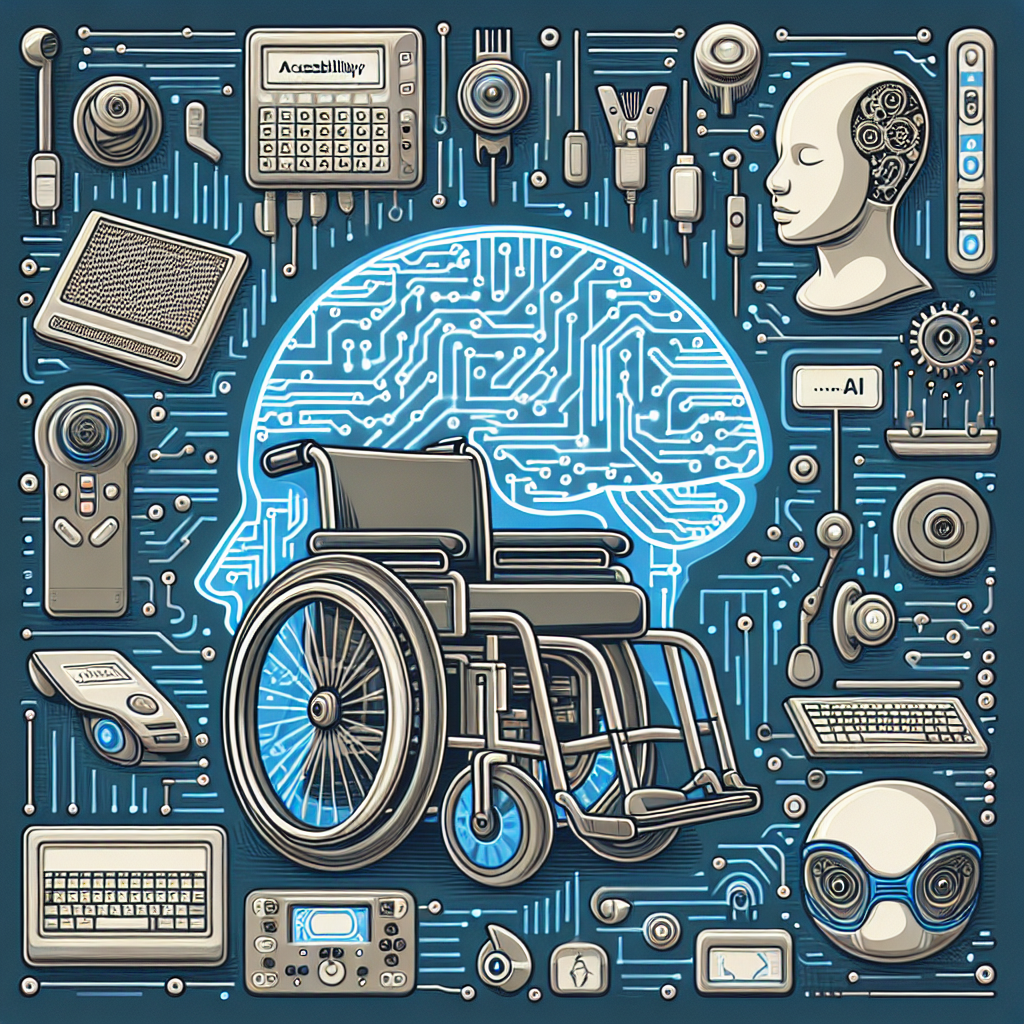In recent years, artificial intelligence (AI) has been increasingly used to improve accessibility for individuals with disabilities. AI development has paved the way for innovative solutions that make it easier for people with disabilities to access information, communicate, and navigate the world around them. From speech recognition technology to smart home devices, AI has the potential to transform the lives of individuals with disabilities in profound ways.
One of the key areas where AI is making a significant impact is in the field of communication. For individuals with speech or hearing impairments, communication can be a major challenge. However, AI-powered speech recognition technology has made it possible for these individuals to communicate more effectively. Whether through text-to-speech or speech-to-text technology, AI has enabled individuals with disabilities to communicate with others in real time, breaking down barriers and fostering greater inclusivity.
In addition to communication, AI is also being used to improve accessibility in the workplace. For individuals with visual impairments, AI-powered screen readers can convert text on a computer screen into speech or braille, making it easier for them to access information and perform tasks independently. Similarly, AI-powered transcription services can help individuals with hearing impairments participate in meetings and conferences by providing real-time captions.
Furthermore, AI is being utilized to improve accessibility in the built environment. For example, AI-powered navigation apps can help individuals with mobility impairments navigate public spaces by providing real-time information about accessible routes and facilities. Similarly, AI-powered smart home devices can be programmed to assist individuals with disabilities in performing daily tasks, such as turning on lights, adjusting the thermostat, or locking doors.
Overall, the use of AI development in accessibility has the potential to revolutionize the way individuals with disabilities interact with the world around them. By leveraging the power of AI technology, we can create a more inclusive society where everyone has equal access to information, communication, and opportunities.
FAQs:
1. How is AI being used to improve accessibility for individuals with disabilities?
AI is being used in a variety of ways to improve accessibility for individuals with disabilities. For example, AI-powered speech recognition technology can help individuals with speech or hearing impairments communicate more effectively. AI-powered screen readers can convert text on a computer screen into speech or braille for individuals with visual impairments. AI-powered navigation apps can help individuals with mobility impairments navigate public spaces by providing real-time information about accessible routes and facilities.
2. What are some examples of AI-powered accessibility solutions?
Some examples of AI-powered accessibility solutions include speech recognition technology, screen readers, transcription services, navigation apps, and smart home devices. These technologies can help individuals with disabilities communicate, access information, navigate the built environment, and perform daily tasks more easily.
3. How can AI development make a difference in the lives of individuals with disabilities?
AI development has the potential to make a significant difference in the lives of individuals with disabilities by providing them with greater independence, autonomy, and access to opportunities. By leveraging AI technology, individuals with disabilities can communicate more effectively, access information more easily, navigate public spaces more independently, and perform daily tasks more efficiently.
4. What are some challenges in using AI for accessibility?
Some challenges in using AI for accessibility include ensuring the accuracy and reliability of AI-powered solutions, addressing privacy and security concerns, and overcoming potential biases in AI algorithms. It is important to continually assess and improve AI-powered accessibility solutions to ensure that they meet the needs of individuals with disabilities and promote inclusivity.
5. How can individuals with disabilities benefit from AI-powered accessibility solutions?
Individuals with disabilities can benefit from AI-powered accessibility solutions by gaining greater independence, autonomy, and access to opportunities. AI technology can help individuals with disabilities communicate more effectively, access information more easily, navigate public spaces more independently, and perform daily tasks more efficiently, ultimately improving their quality of life.

